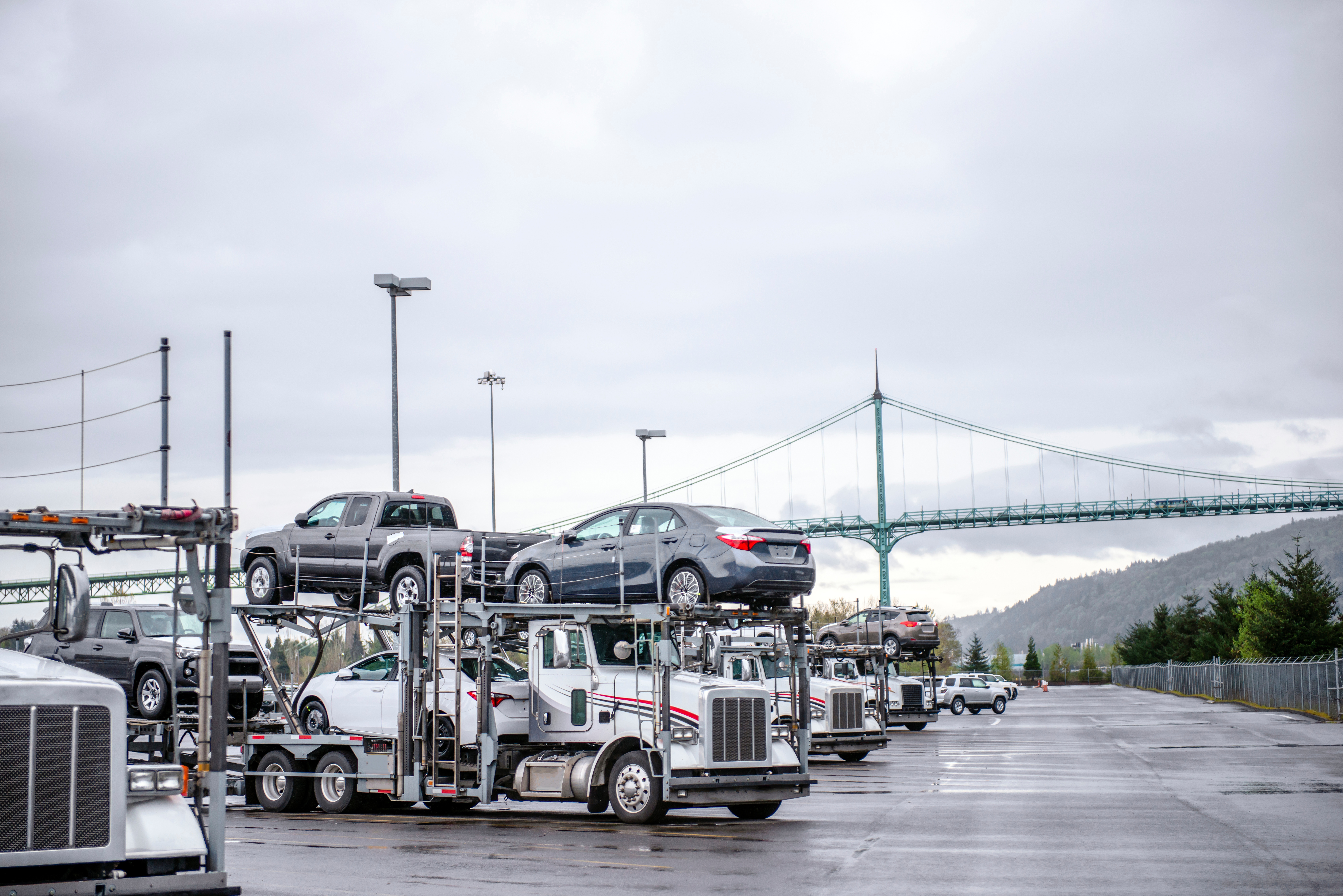Moving into a new home always comes with a little stress, even if you’re just relocating to the next town over. When you’re moving cross-country, the process can be overwhelming. There’s a lot more planning, effort, and expense involved.
Our comprehensive checklist for moving across the country can help you streamline the process. Copy the list, check off the tasks, and breathe easy knowing you have all the details covered.
Quick Checklist for Moving Cross-Country
8 Weeks
|
6 Weeks
|
4 Weeks
|
One Week
|
Day Of Your Move
|
Expanded Checklist for Moving Cross Country
8 Weeks Before Moving Cross Country
|
Two months may seem early, but you’d be surprised how quickly that time will fly. Every day of these 8 weeks is an opportunity to check off a task on your to-do list for moving across the country.
Create Digital Moving Files
Create a folder on a cloud platform like Google Drive to store your photos, property inventory, receipts, and quotes for quick access. While you should keep hard copies in a safe location, digital files can be accessed on the go from any device with an internet connection.
Research Moving Companies
The moving company you hire has a big responsibility. Take your time researching different moving companies, read reviews, and ask your network if they have any recommendations for quality movers that can transport your possessions safely.
Reserve Your Moving Company
Once you’ve selected a moving company, set a date for your move. Much of your move will be planned around when your movers can transport your possessions. During the busy summer season, it may be more difficult to get your preferred dates without advanced notice.
Make a Transportation Plan
Movers will handle your property, but planning driving time, airfare costs, or car shipping is up to you. Figure out how you and your family – including pets or vehicles – will get to the destination. If needed, book airfare and accommodation as early as possible.
Shipping a car adds to your moving expenses but saves you a long drive. Just like your moving company, it’s best to research auto transport companies and book your car shipping as early as you can.
Set a Budget
The cost of moving across the country can pile up, especially if you’re bringing your family and property thousands of miles away. Prepare to invest in packing supplies, a moving truck or movers, hotels, gas or airfare, and car transport. Add expenses like a cleaning service, packing supplies, tips for moving staff, pet boarding, and specialty shipping.
Declutter
Ruthlessly declutter your home before the move. Set up bins for donating, selling, or throwing away items to stay organized. While you’re decluttering, pay attention to materials you can use for packing, such as old clothes, blankets, and towels.
6 Weeks Before Moving Cross Country
|
With the foundation of your moving checklist complete, you can start checking off small tasks along the way.
Review Your Insurance Policies
Verify that your insurance policies cover you for the moving process. Keep in mind that insurance providers may have different plans for each state, so you may need additional coverage.
Take Inventory
With your property decluttered, you can take inventory of your belongings for your insurance policy and professional movers. It’s crucial to have a current inventory with documentation of the condition of your property if there’s a claim.
Back up your inventory with pictures and videos, especially with high-value goods like antique furniture, artwork, jewelry, and electronics.
Gather Your Moving Supplies
As expected, you will need a lot of boxes, packing materials, and tape for your move. Gathering moving supplies slowly leading up to your move is much less overwhelming, plus you have time to get some free supplies.
Ask retailers like department stores, big-box stores, and office supply stores if they have extra boxes you can take off their hands. As you gather boxes and packing materials, start loading up nonessential items like books, art, and collectibles. Label each box as you go.
Evaluate Your New Home’s Measurements
It’s common for people to buy homes or rent apartments online based on pictures instead of in-person tours. However, you will need measurements to prepare for any challenges moving your things in, such as tight doorways, steep staircases, or awkward angles.
Get measurements from the home seller or the real estate agent, including the dimensions of the rooms that will hold furniture and appliances. Use the floor plan to visualize the space and strategize your move.
Finalize Moving Dates
At this point, you should have an established timeline for your move. Start setting and finalizing moving dates, including the booking from a professional moving company, the new homeowner’s moving date, and flights and accommodation.
4 Weeks Before Moving Cross Country
|
Your move is getting close! It’s time to take care of some small, tedious tasks.
Change Your Address
Notify senders about your change of address. You can do this easily on the United States Postal Service (USPS) website. You also need to change your address with the state, DMV, voter registration, Social Security, banks and credit card companies, employers, and service providers.
Gather Personal Records
Sensitive personal records that are difficult to replace, such as birth certificates, should be packed into a bag that travels with you. Include medical and dental records, passports, pet veterinary records, school transcripts, and any legal documents. You should also fill any prescriptions that are running low.
Find New Providers
Emergencies and mishaps can pop up at any time. Find your new doctors, pharmacy, veterinarian, dentist, optometrist, hairstylist, mechanic, or any other service provider you may need before your move.
Start and Stop Services
Contact your utilities and services to stop service or notify them of your move, such as your electricity, heat, water, and cable. Notify service providers that you are moving and will no longer need them, such as house cleaners, babysitters, dog walkers, and gardeners, and arrange for these services at your new home.
One Week Before Moving Cross Country
|
Here are some of the last essential steps to prepare for a smooth move:
Confirm Details with the Movers
If you hired a moving company, call to verify the details and arrange payment. Get your arrival and departure times in writing.
Pack the Essentials
Most of your possessions will be packed at this point, but you need to pack up the items you’ll need for the move and when you arrive, such as some clothing and toiletries. Pack a box with disposable plates and flatware, paper goods, and garbage bags to simplify things while you’re unpacking in your new home.
The Day of Your Move
|
The day has arrived! Here’s how to make it less stressful:
Maintain a Clear Path
Keep a clear path in your home to allow movers to transport boxes easily. Clear out big furniture and move boxes out of doorways.
Communicate the Loading Plan
Work with the moving company to determine which items should be loaded up first. This will make the process much smoother when you arrive at your new home and have to unpack.
Tip Your Movers
Make sure to tip your movers to show your appreciation. The typical amount to tip movers is a $40 flat rate each for the day or $4 or $5 per mover per hour.
Do a Final Walkthrough
Before you leave, check each room in your home to make sure you didn’t leave anything behind. Go through closets, cabinets, and cubbies. If it’s clear, turn off the lights, close the windows, and lock the doors when you leave.
Get Help with Your Cross-Country Move
This checklist for moving across the country should help you handle each step of the process and stay calm. If you want assistance from professional moving companies, check our moving cost calculator to work it into your budget.



